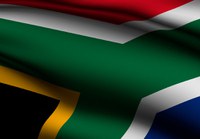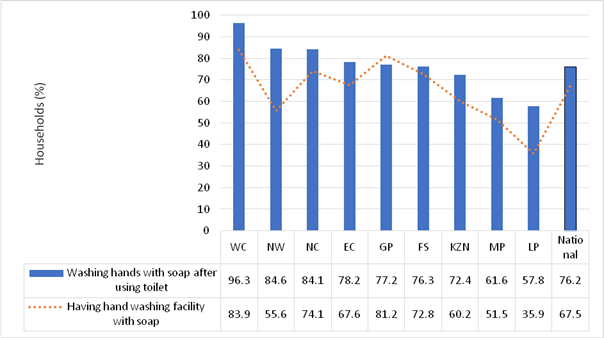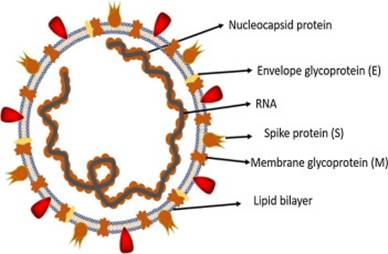
Introduction
The unprecedented global COVID-19 pandemic has upended the world and our country. The World Health Organization first declared the outbreak a public health emergency of international concern on 30 January 2020,[1] but five weeks later upgraded its assessment of COVID-19 to pandemic status.[2] In South Africa, the first case of infection with the virus was reported on 5 March 2020.[3]
Just ten days later, the extensive powers afforded by the Disaster Management Act, 2002 [4] were invoked for the first time since democracy, when the government declared a state of national disaster on 15 March 2020.[5] Soon after, in an attempt to inhibit the spread of the virus, regulations were issued decreeing a national lockdown, severely restricting movement, travel, gatherings, business and commercial operations and imposing penalties for false statements.[6]
For the Department of Human Settlement, Water and Sanitation, the emergency cast sharp light on existing flaws in the national management and delivery of water and sanitation services. For instance, despite widespread reticulation of water to households, the 2018 General Household Survey indicated that appreciable numbers of households were still dependent for drinking water on rivers and springs, or stagnant water sources, such as dams and pools, or springs or wells. In addition, the survey also revealed that 32.5% of South Africans lacked hand washing facilities (Figure 1).[7]
Figure 1: Percentage of households who wash their hands with soap after using the toilet by province, 2018

As an emergency response, the Minister issued a directive to the Department and all its water entities on 15 April. [8] This required urgent dispatch of water, sanitation and hygiene related resources to rural communities and informal settlements. While this is a disaster management response, these interventions have been long overdue.
Access to sufficient water is a right accorded to all in South Africa.[9] Government is constitutionally obliged to take reasonable legislative and other measures to progressively realise this right. How fundamentally important this right is to basic well-being, and mere survival, has become acutely evident in the pandemic.
Modes of transmission
Much remains unknown about transmission of the virus. Some studies suggest that the virus has airborne transmission routes. Others suggest that transmission may also occur via contact with fomites (objects or materials likely to carry infection such as clothes, utensils, and furniture clothes, furniture and medical equipment such as stethoscopes and thermometers) in the immediate environment around the infected person.[10] But essential information about the mode of transmission and the extent of environmental contamination remains unknown. [11]
Additionally, there is no proven vaccine or cure for COVID-19. The practical consequence of the current lack of certainty is that global and national public health awareness programs are obliged to pay particular attention to essential preventive measures.
Hand hygiene
The World Health Organization foregrounds hand hygiene, social distancing[12] and wearing of face masks by sick and pre-exposed individuals as measures for curbing transmission. [13] In South Africa, government preventive protocols explicitly encourage all persons to frequently wash their hands with soap and water, or alcohol-based hand sanitizer.
Figure 2: Morphology of coronavirus

Source: Shereen et al., 2020 (under Creative Commons license)[14]
Hand washing has been suggested as one of the few clearly ascertained effective means of slowing and stopping transmission. This is because coronaviruses are enveloped viruses, they are surrounded by fragile membranes (the lipid bilayer membrane) (Figure 2).[15] The membrane surrounding the capsid dissolves when coming into contact with soap (a capsid is a protein shell of a virus, enclosing and protecting its genetic material).[16] Hence hand washing with lipid-emulsifying detergents (ordinary soaps) and lipid-alcohols dissolves the membranes, breaking the virus apart and thus inactivating it.[17]
Functionality of the water supply system
This elementary fact brings into acute focus unsatisfactory features of South Africa’s water supply system. A stable water supply is essential to enable individuals to ensure their own safety. Yet for a considerable proportion of the population, particularly those living in informal settlements and in rural areas, this is lacking, even among those who have a municipal supply. The metric is the extent to which households that receive water from a municipality reported, over the preceding 12 months, interruptions lasting more than 48 hours at a time, or more than 15 days in total, during the whole period.
The situation is disturbing. Across provinces, and along the rural urban divide, the functionality of municipal water supply services has been observed to be precarious, erratic (low reliability with frequent interruptions) and uneven.
This is largely because of –
- Vandalism
- Ageing infrastructure
- Poor maintenance and operation by water services authorities
Vandalism: Vandalism may be understood as the deliberate destruction of property for indiscernible reasons. Vandalism in relation to water supply infrastructure remains a significant problem in South Africa. This is so, even though the government has condemned the vandalism of water supply infrastructure and has urged users to protect facilities to cut down on water supply interruptions.[18]
Ageing infrastructure: The second impediment to sufficient water supply is degraded and disintegrating infrastructure, including reticulation pipes. It would appear that, in many water services authorities, no (or inadequate) repair and maintenance measures have been put in place to address water supply interruptions.
Poor maintenance and operation by water services authorities. A considerable number of local authorities fail to render returns to national water data bases. Among those that do, there is often evidence of inadequate operation.
Demands on water and related resources
A National Disaster Water Command Centre has been established, co-ordinated by the Chief Executive of Rand Water. Disaster management measures have sought to coordinate water supply so as to combat the spread of COVID-19. Irrigation boards, water user associations and catchment management agencies have been informed that, when the need arises, they will be directed to make water and other water and related resources available under authority and control for use by the Department or its authorised agents.[19] It is not presently known whether this power has been invoked. Government has urged municipalities not to cut water supply to residents.[20]
Conclusion
The disaster management response to COVID-19 exposes major shortcomings in the national water and sanitation supply system. The stark fact is that a substantial proportion of the population lacks the elementary means to secure their self-protection against viral transmission through basic sanitation practice of hand-washing. It thus becomes critically important during the epidemic to improve the functionality of the system, especially in circumstances of overcrowding in congested urban areas. In the longer term, this is best addressed through proactive service delivery. Hasty, unplanned or uncoordinated ad hoc responses will have limited efficacy.
Nhlanhla Mnisi
nhlanhla@hsf.org.co.za
Researcher
[1] WHO 2020, URL: https://www.who.int/emergencies/diseases/novel-coronavirus-2019/events-as-they-happen. A Public Health Emergency of International Concern is defined by the International Health Regulations (IHR) (2005) as ‘an extraordinary event which is determined to constitute a public health risk to other States through the international spread of disease and to potentially require a coordinated international response’.
[2]http://www.euro.who.int/en/health-topics/health-emergencies/coronavirus-covid-19/news/news/2020/3/who-announces-covid-19-outbreak-a-pandemic. See, too, WHO 2020, URL: https://www.who.int/news-room/q-a-detail/what-are-the-international-health-regulations-and-emergency-committees.
[3] See https://www.nicd.ac.za/first-case-of-covid-19-coronavirus-reported-in-sa/ (accessed 21 April 2020)
[4] Act 57 of 2002.
[5] See Dewald van Niekerk, “A critical analysis of the South African Disaster Management Act and Policy Framework”, available at -- https://www.researchgate.net/publication/265388994_A_critical_analysis_of_the_South_African_Disaster_Management_Act_and_Policy_Framework (accessed 21 April 2020).
[6] See https://www.gov.za/coronavirus/guidelines (accessed 21 April 2020).
[7] Stats SA 2019, URL: http://www.statssa.gov.za/publications/P0318/P03182018.pdf. The details are that 279 households depended on rivers and springs for drinking water, 23 households on stagnant sources of water such as dams and pools, 42 depended on springs and 104 depended on wells.
[8]Notice 464, Government Gazette 43231, 15 April 2020
[9] Bill of Rights, section 27(1)(b).
[10] Ong et al 2020, URL: https://www.ncbi.nlm.nih.gov/pubmed/32129805
[11] Ibid
[12] WHO 2020, URL: https://www.who.int/emergencies/diseases/novel-coronavirus-2019/advice-for-public
[13] World Economic Forum 2020, URL: https://www.weforum.org/agenda/2020/03/who-should-wear-a-face-mask-30-march-who-briefing/
[14] Shereen et al., 2020, URL: https://www.sciencedirect.com/science/article/pii/S2090123220300540, accessed 21 April 2020.
[15] WHO 2020, URL: https://www.who.int/publications-detail/water-sanitation-hygiene-and-waste-management-for-covid-19
[16] Cuervo et al 2013, URL: https://www.ncbi.nlm.nih.gov/pubmed/23737058
[17] Hill 2020, URL: https://www.researchgate.net/publication/340438935_Covid-19_-The_Big_Crisis_of_our_Lifetime_Considerations_for_Podiatry_and_Foot_Health
[18] Rand Water 2020, URL: https://www.randwater.co.za/Pages/Home.aspx
[19] Government Gazette 2020, URL: https://www.gov.za/sites/default/files/gcis_document/202004/43231gon464.pdf
[20] Ibid

